With an almost 25′ tidal range, rocky shorelines, and steep beaches, the waters around Juneau are nearly impossible to cruise in a small boat without the ability to anchor while spending time ashore. Leaving a boat at the water’s edge where it would grind against the rocks or get stuck on the wrong side of a tide is a very real problem. Larger boats can carry dinghies for shuttling from anchored boat to beach and back, but on a smaller boat like our Caledonia yawl that’s not a practical solution.
There are a few ways to solve this problem. Setting up an outhaul anchor, or “clothesline loop,” from the anchor to the beach works well but it has its drawbacks—the primary one being that it requires lots of line that is easily tangled. It allows easy access to the boat, but for a short trip ashore it can be more trouble than it’s worth. There is also the Siwash method of anchoring: placing the anchor, chain, and rode on the bow with a long retrieval line tied to the anchor flukes, and shoving the boat out, letting the retrieval line trail after it. When the boat’s in deep water, a tug of the line drops the anchor. It’s easy to do but hard on the paint, and not convenient if you forgot the hot dogs. You’ll need to start over.
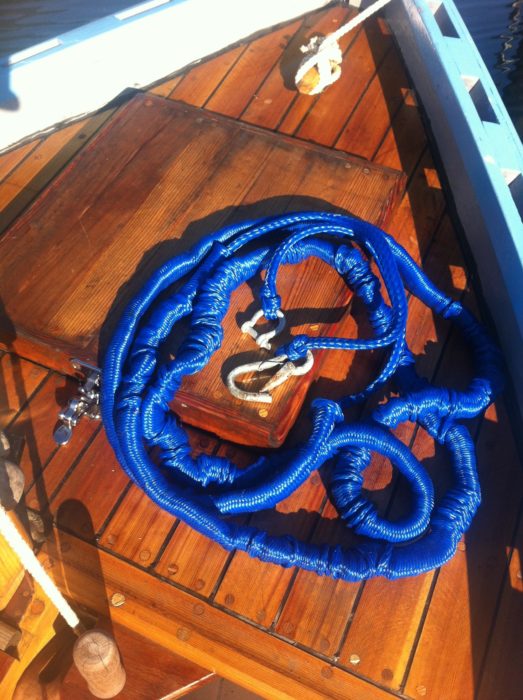
The Anchor Buddy is a length of 3/8″ natural latex tubing sheathed in a hollow braided polypropylene line, and unlike an equivalent length of bungie cord, it will easily stretch from 14′ to 50′ and it won’t get progressively harder to pull.
An option I like is an Anchor Buddy. I found it at my local marine hardware store when I was looking for a new anchoring solution. We’ve used the Anchor Buddy many times, generally securing its ends in loops tied in bights in the rode. The loops are 50′ apart so the rode picks up the strain at maximum extension of the Anchor Buddy. That’s helpful if the anchor gets snagged, and adds a strong backup to the Anchor Buddy if it were to fail for some reason—we wouldn’t lose the anchor or the boat. It takes a bit of practice to get it set up so you have full extension and can just reach the shore. When I drop the anchor and row my boat in, stretching the Anchor Buddy, it helps to have someone on shore hold the boat while I ship the oars and prepare to disembark. It’s best to start off with a long line between boat and beach, tied to driftwood or anchored with a grapnel. I can then set the anchor and pull myself in. We have also used the Anchor Buddy to span small pools or narrow inlets with the Anchor Buddy and bow line secured on one side and a stern retrieval line on the other.
The Anchor Buddy has done its job well, keeping our boat afloat and off the rocks while we have lunch on the beach or go exploring. I’ve been using it for a few years now and it has held up well, although its fittings, a zinc-plated snap hook and shackle, are starting to show the effects of corrosion—a minor problem I can easily fix with stainless steel replacements.
The Anchor Buddy is a handy addition to any small boat’s anchoring toolkit.![]()
Jim Danner is an IT manager for the state of Alaska. When he’s not working he’s spending time with his family—he and his wife recently added a baby boy to the crew—or messing around with small boats. The Caledonia yawl SPARROW was his first boat project and he has since built a few skin-on-frame kayaks. His article on a family cruise in SPARROW, to the mining ruins of Juneau, also appears in this issue.
The Anchor Buddy is manufactured by Greenfield Products, and retails for $35.99 at West Marine.
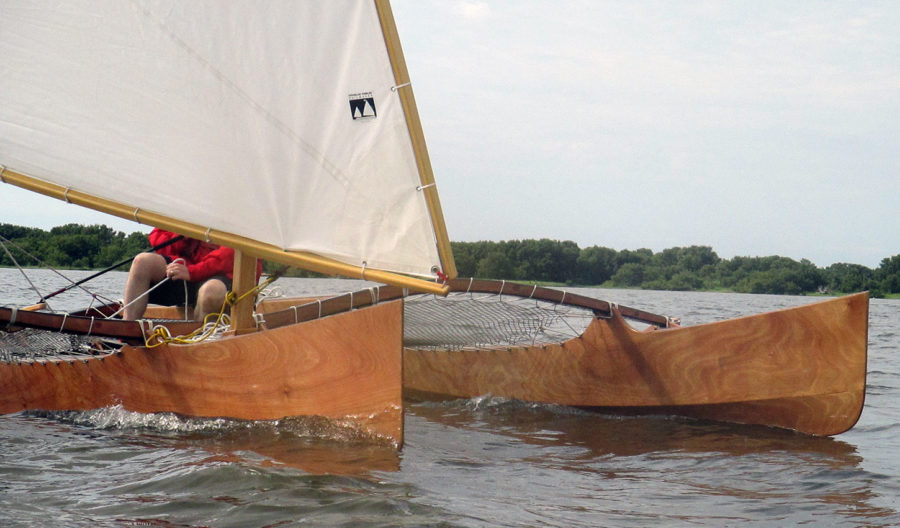
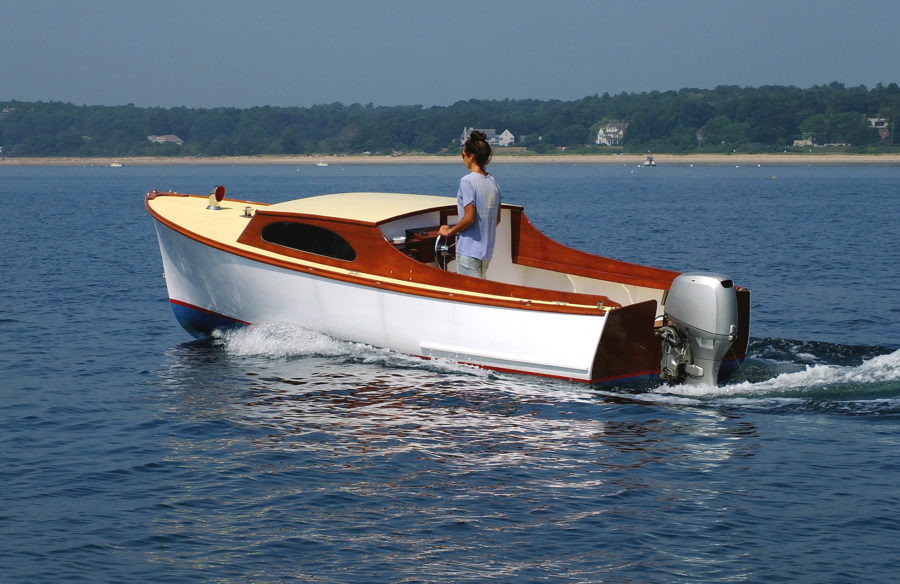
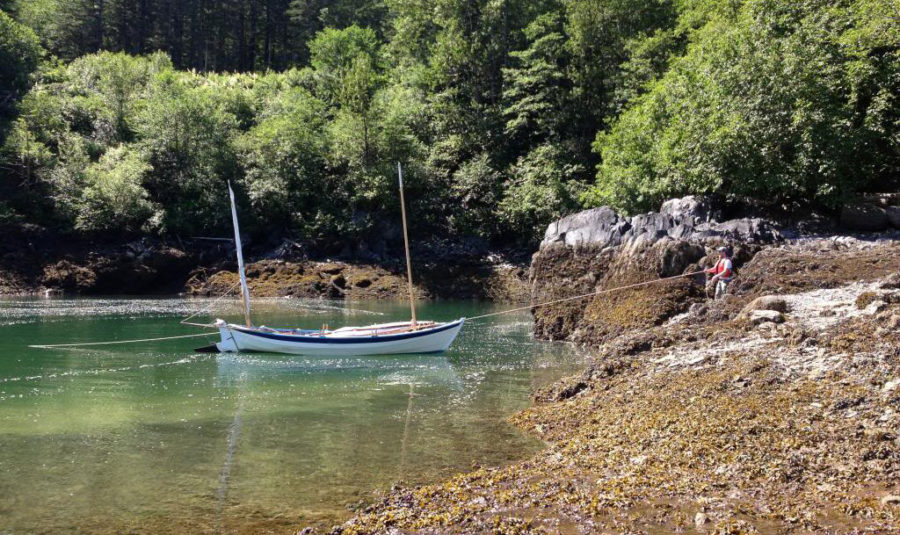
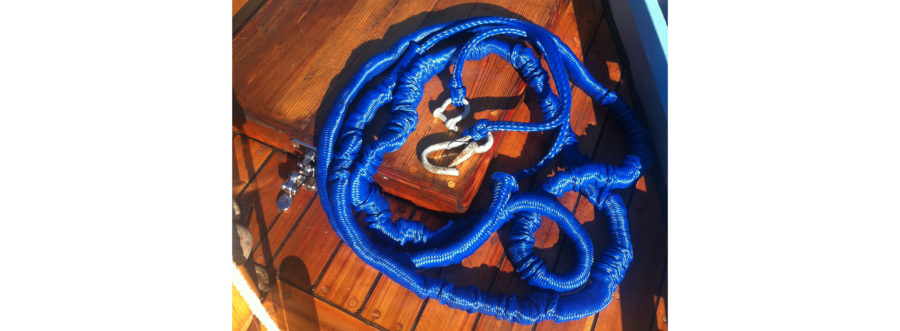
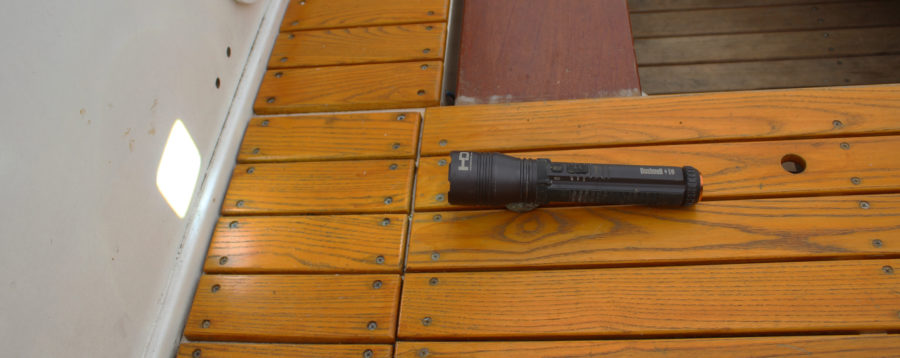
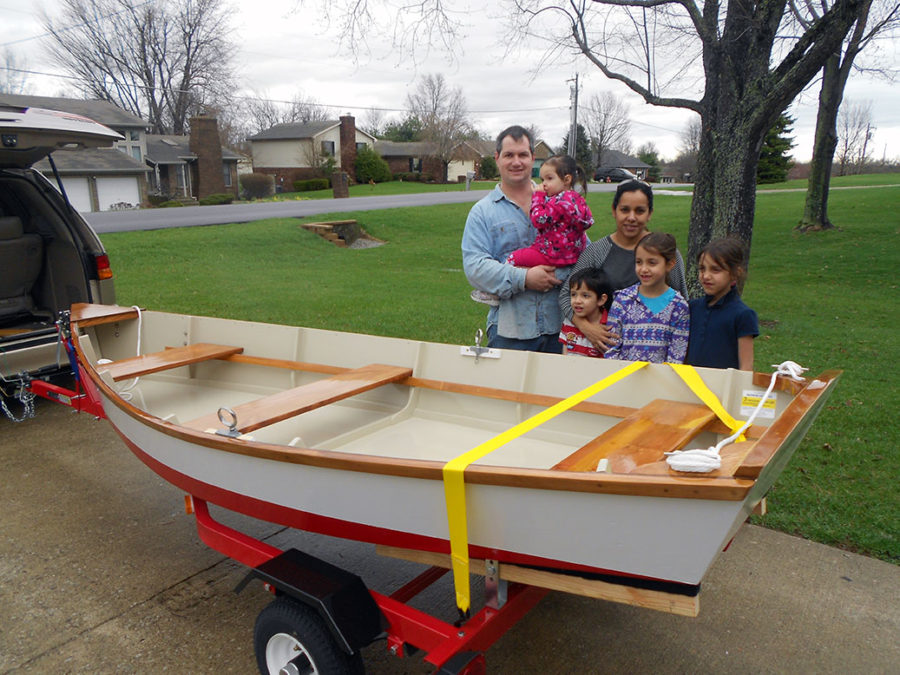
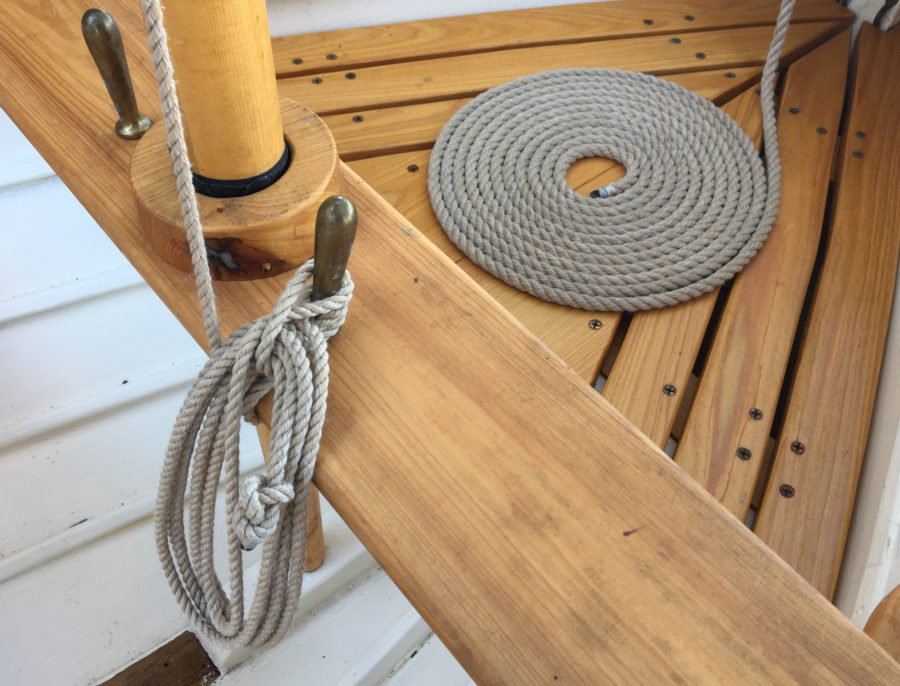
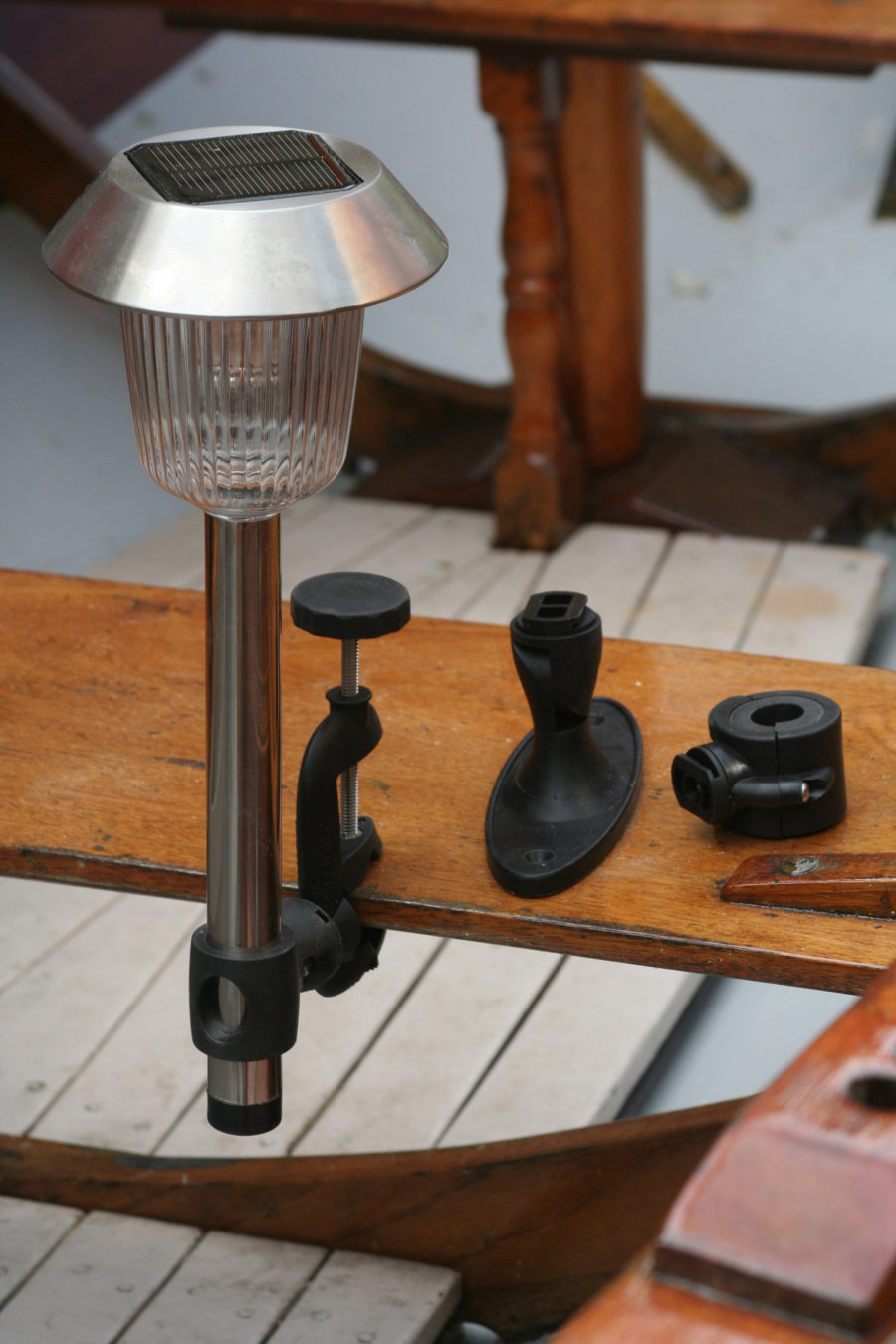
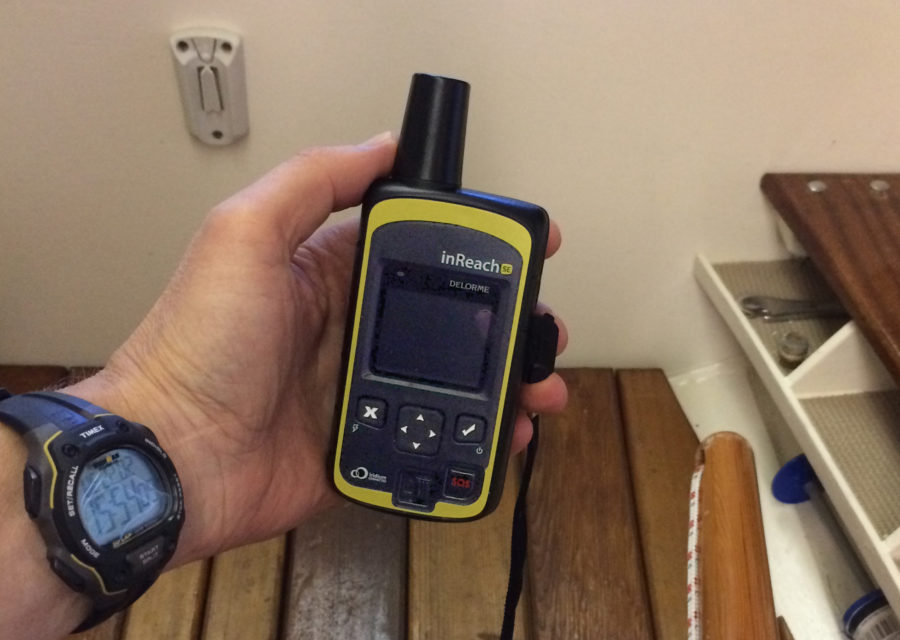
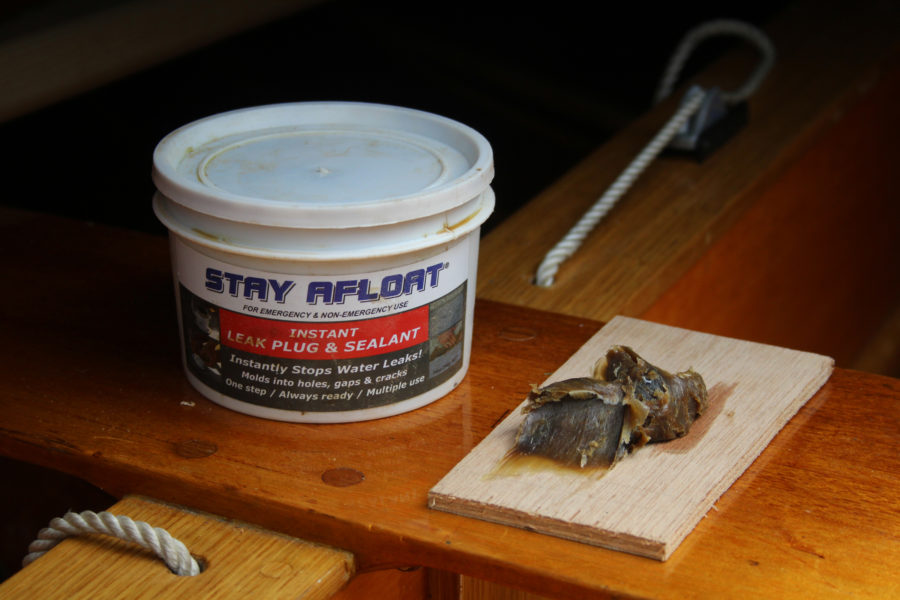
Alas I find it difficult to follow this article – as with any description about rope handling a few diagrams/pictures would be helpful to explain the different solutions noted.
Hi Nick,
You’re quite right, when it comes to handling cordage, words don’t quite do the job. I should have drawn more attention to the link to the manufacturer’s web site.
http://greenfieldproducts.com/chain-cordage/anchor-buddy
There are some diagrams there and the inventor’s web site has similar diagrams.
http://www.tuggyproducts.com/anchorbuddy.html
I hope that helps. Thanks for taking a look at SBM. Your suggestions are always welcome.
Chris Cunningham, Editor
I have a couple of anchor buddies that I have used on my sailboat (~1700 pounds) and powerboat (~4200 pounds). They are much more forgiving with the lighter craft and work best in low wave conditions. They are perfect for smaller boats. Since we go to exposed tidal beaches they have provided the perfect solution to keeping us afloat while we enjoy the day between tides.
-JT
Marion, MA
I use a system that performs similarly but with a regular anchor rode rather than an elastic one.
I use a relatively light nylon three-strand line. I tie one end of the line to the transom of my boat and run the other end through a shackle in the the anchor. I set the anchor and go to shore with the other end of the line.
From shore, I pull on the line and this runs through the shackle and pulls the boat towards the anchor and away from land.
I then make fast both that stern line and a bow line onshore and the boat is safely moored with the stern towards the anchor and the bow towards shore.
If there are waves I reverse the orientation so the bow faces the waves.